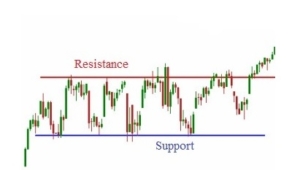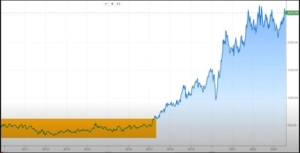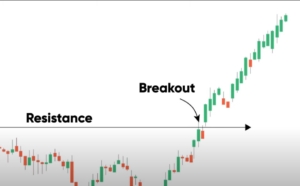The Psychology of Breakouts
Introduction
Today, we will talk about a very popular topic in the world of trading called Breakouts. So, we’ll discuss everything that you need to know about breakouts. We will start with what is a breakout, what is the psychology behind breakout? Why do breakouts actually happen? Then we will talk about how do we identify a breakout?
What are the different characteristics that we have to look for in identifying a breakout? And lastly, we will discuss what are the issues with breakout? If you’re trading based on the breakouts, what are the important things that you need to keep in mind? All right. So, let’s get started.
What is a breakout?
Breakouts are basically very simple. When a stock or index moves above a resistance level with momentum, it is called a breakout. So, let me give you an example.
So, this right here is a weekly chart of Reliance.
And you can see that for a very long period of time from 2010 all the way to 2017 for basically seven years, the Reliance was just trading in a range between 350 rupees to 550 rupees.
And then on one fine day, the stock moved above the resistance level with momentum. And till today, the stock has not looked back, right? So, this is a classic example of a breakout.
Psychology of Breakouts
So now let’s talk about the psychology of breakouts? So, why do breakouts happen? Everything in the stock market can be explained in terms of valuations, right?
Either stocks are undervalued or stocks are overvalued, and based on where they are, stocks behave differently. So, if you go back to the case of reliance, Reliance was sitting in the range for a very long time because in terms of valuation, whenever Reliance used to go to the higher level, this resistance level, there used to be some kind of a selling pressure because the stock became overvalued at that point in time, right?
Because people believed that based on the business fundamentals of the company, this price is on the higher side. Then one fine day in 2017, the market comes to know about something new about the company, right; and if you guys remember, that is the time when Jio was launched.
And all of a sudden, the valuation dynamics of the company changed. The expectations about the company’s profitability changed. Now people started seeing Reliance from a different point of view, right? Reliance was no longer just an oil-based company. It was now branching out to be a major telecom player.
So, when an event like this happens, which changes the dynamics of valuation, investors rush in to buy the stock of the company. And that is the reason why these breakouts happen. Now, from a trading point of view, breakouts are important and here is why.

And it is commonly observed that after a successful breakout, the stocks tend to keep moving in that direction for several weeks, several months, and in case of reliance, several years. Hence, by buying a breakout stocks, traders try to ride this wave as far as possible. In fact, there are traders out there who just simply trade breakouts.
They basically call themselves as breakout traders. And their whole system is designed to identify breakout, find a good entry point, keep a reasonable stop loss. And of course, have a good position size.
How to identify breakouts?
Now let’s talk about how do we identify a breakout rate? How do we know that a breakout is happening?
So, breakout has three important characteristics.
- The price has to break a key resistance level with momentum.
- The volumes on the breakout days are several times higher than their average volume. So, if you take the average volume of the last 30 days or one month or two months of, for Reliance, and you take the volume of the day of the breakout, you will find that the volume on the breakout day was significantly higher.
- There is usually some kind of a news or event that triggered the breakouts. So, it can be management commentary, or it can be quarterly earnings, or it can be the news of merger or acquisition, whatever is the case, there is some trigger which induces the breakout.
All right. So, based on what we have discussed so far, breakouts seem like an easy way to make money, right? But the reality is that breakouts can also be sometimes tricky.
What are the issues with the breakouts?
So, think of breakouts like big budget movies, right? If they work, they make a lot of money, but if they flop, there is a steep price to pay. So, the reason breakouts are risky is because the price at which we enter is very high.
In fact, if you look at the charts in this case, the price at which you are buying is basically the all-time high for that particular stock. Therefore, if the breakout works out, of course, you’re going to make money.
But if the breakout fails, which happens several times, the traders can find themselves in serious trouble. So that is the one caution that you have to keep in mind that breakouts are not always going to be as straightforward.
Conclusion
Sometimes the breakouts also tend to be false signals. Okay. So, the bottom line here is that guys, breakouts are great. Yes, they make a lot of money, but identifying and trading breakouts is more art than science, right? And one needs to have a keen sense of risk management to be able to trade breakouts successfully. Sometimes the breakouts also tend to be false signals. Okay. So, the bottom line here is that guys, breakouts are great. Yes, they make a lot of money, but identifying and trading breakouts is more art than science, right? And one needs to have a keen sense of risk management to be able to trade breakouts successfully.
Howdy!
If you’re here for the first time, let’s get introduced.
VRD Nation is India’s premier stock market training institute and we (Team VRD Nation) are passionate about teaching each and every aspect of investing and trading.
If you’re here for the first time, don’t forget to check out “Free Training” section where we have tons of free videos and articles to kick start your stock market journey.
Also, we got two awesome YouTube channels where you can continue the learning process.
Must-Read Articles
The Psychology of Breakouts
Introduction
Today, we will talk about a very popular topic in the world of trading called Breakouts. So, we’ll discuss everything that you need to know about breakouts. We will start with what is a breakout, what is the psychology behind breakout? Why do breakouts actually happen? Then we will talk about how do we identify a breakout?
What are the different characteristics that we have to look for in identifying a breakout? And lastly, we will discuss what are the issues with breakout? If you’re trading based on the breakouts, what are the important things that you need to keep in mind? All right. So, let’s get started.
What is a breakout?
Breakouts are basically very simple. When a stock or index moves above a resistance level with momentum, it is called a breakout. So, let me give you an example.
So, this right here is a weekly chart of Reliance.
And you can see that for a very long period of time from 2010 all the way to 2017 for basically seven years, the Reliance was just trading in a range between 350 rupees to 550 rupees.
And then on one fine day, the stock moved above the resistance level with momentum. And till today, the stock has not looked back, right? So, this is a classic example of a breakout.
Psychology of Breakouts
So now let’s talk about the psychology of breakouts? So, why do breakouts happen? Everything in the stock market can be explained in terms of valuations, right?
Either stocks are undervalued or stocks are overvalued, and based on where they are, stocks behave differently. So, if you go back to the case of reliance, Reliance was sitting in the range for a very long time because in terms of valuation, whenever Reliance used to go to the higher level, this resistance level, there used to be some kind of a selling pressure because the stock became overvalued at that point in time, right?
Because people believed that based on the business fundamentals of the company, this price is on the higher side. Then one fine day in 2017, the market comes to know about something new about the company, right; and if you guys remember, that is the time when Jio was launched.
And all of a sudden, the valuation dynamics of the company changed. The expectations about the company’s profitability changed. Now people started seeing Reliance from a different point of view, right? Reliance was no longer just an oil-based company. It was now branching out to be a major telecom player.
So, when an event like this happens, which changes the dynamics of valuation, investors rush in to buy the stock of the company. And that is the reason why these breakouts happen. Now, from a trading point of view, breakouts are important and here is why.

And it is commonly observed that after a successful breakout, the stocks tend to keep moving in that direction for several weeks, several months, and in case of reliance, several years. Hence, by buying a breakout stocks, traders try to ride this wave as far as possible. In fact, there are traders out there who just simply trade breakouts.
They basically call themselves as breakout traders. And their whole system is designed to identify breakout, find a good entry point, keep a reasonable stop loss. And of course, have a good position size.
How to identify breakouts?
Now let’s talk about how do we identify a breakout rate? How do we know that a breakout is happening?
So, breakout has three important characteristics.
- The price has to break a key resistance level with momentum.
- The volumes on the breakout days are several times higher than their average volume. So, if you take the average volume of the last 30 days or one month or two months of, for Reliance, and you take the volume of the day of the breakout, you will find that the volume on the breakout day was significantly higher.
- There is usually some kind of a news or event that triggered the breakouts. So, it can be management commentary, or it can be quarterly earnings, or it can be the news of merger or acquisition, whatever is the case, there is some trigger which induces the breakout.
All right. So, based on what we have discussed so far, breakouts seem like an easy way to make money, right? But the reality is that breakouts can also be sometimes tricky.
What are the issues with the breakouts?
So, think of breakouts like big budget movies, right? If they work, they make a lot of money, but if they flop, there is a steep price to pay. So, the reason breakouts are risky is because the price at which we enter is very high.
In fact, if you look at the charts in this case, the price at which you are buying is basically the all-time high for that particular stock. Therefore, if the breakout works out, of course, you’re going to make money.
But if the breakout fails, which happens several times, the traders can find themselves in serious trouble. So that is the one caution that you have to keep in mind that breakouts are not always going to be as straightforward.
Conclusion
Sometimes the breakouts also tend to be false signals. Okay. So, the bottom line here is that guys, breakouts are great. Yes, they make a lot of money, but identifying and trading breakouts is more art than science, right? And one needs to have a keen sense of risk management to be able to trade breakouts successfully. Sometimes the breakouts also tend to be false signals. Okay. So, the bottom line here is that guys, breakouts are great. Yes, they make a lot of money, but identifying and trading breakouts is more art than science, right? And one needs to have a keen sense of risk management to be able to trade breakouts successfully.


















![What is Virtual Contract Note [Zerodha]](https://www.vrdnation.com/wp-content/uploads/2023/10/maxresdefault-virtual-note-500x383.jpg)



Leave A Comment